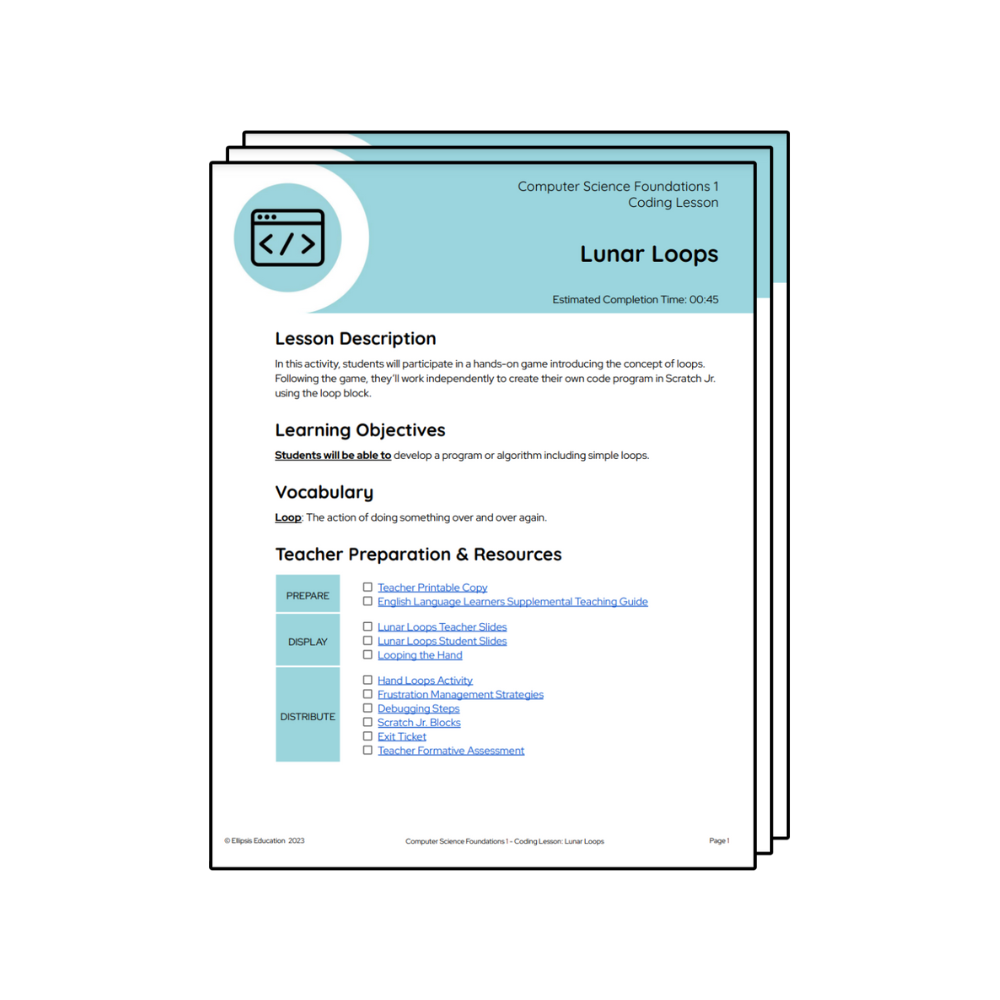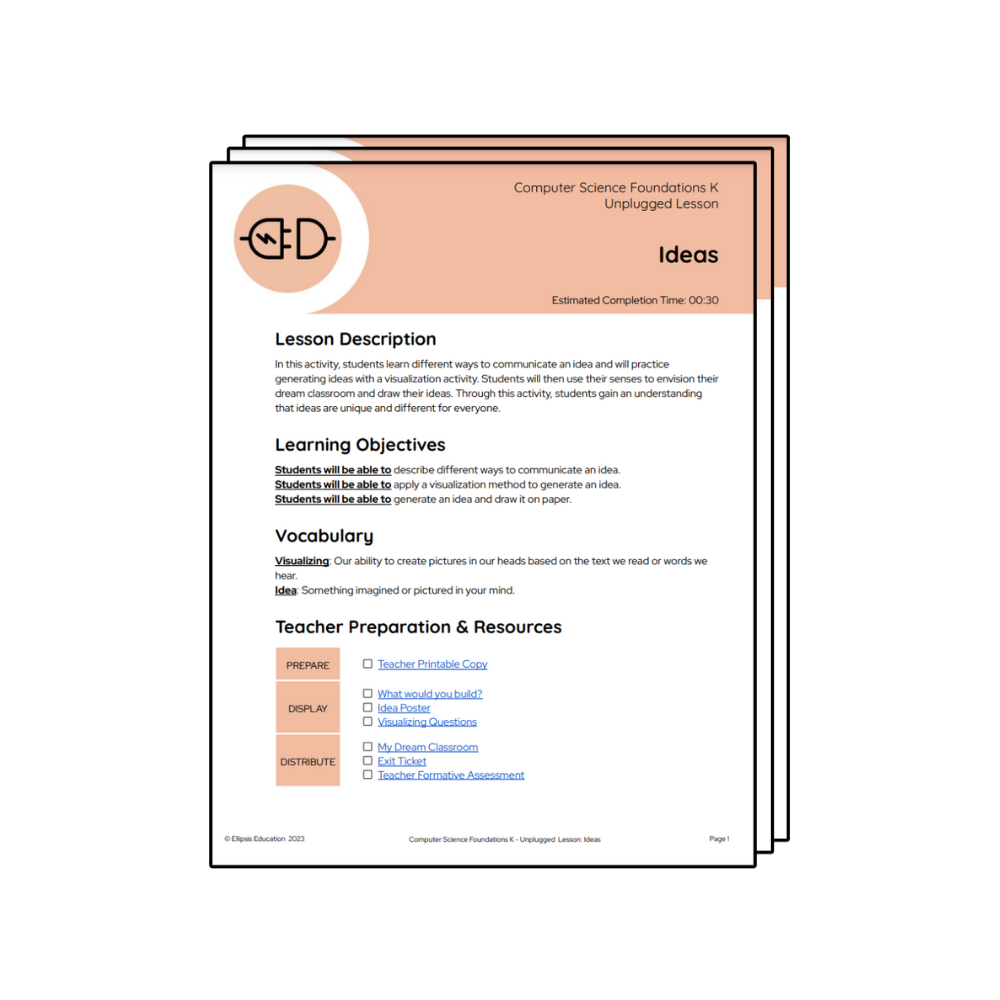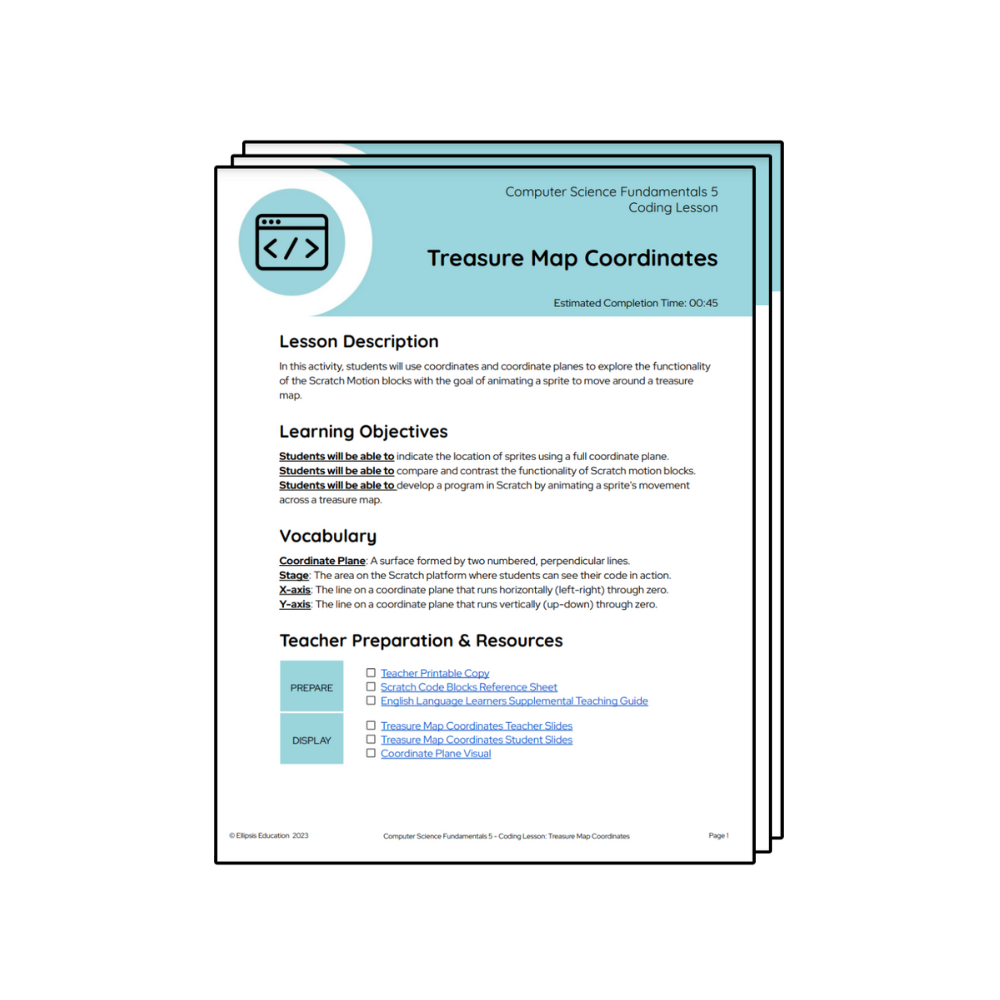STEM Resources for Teachers
It’s no secret: STEM (science, technology, engineering, and mathematics) is an important part of a 21st century education. Computer science is a great way to introduce all four areas of STEM and develop key skills. Ellipsis Education is a full curriculum, not just stand-alone activities, that help teachers introduce all four subject areas.
Computer Science Curriculum

Any Teacher Can Teach
From scripted lesson plans to robust training to continuous learning, Ellipsis helps teachers build confidence and capacity.

Everything in One Place
The Curriculum Delivery Platform houses all your computer science lessons – no more piecing together free resources.

Teacher-Led
Just like any reading or math curriculum, Ellipsis leverages your best resource: teachers.

Beyond Coding
Ellipsis lessons develop the attitudes, knowledge, and skills necessary to thrive – in academic settings and beyond.
K-12 Computer Science Curriculum
Learn what makes Ellipsis Education different from other STEM resources. Dr. Whitney Dove discusses the instructional design decisions that help teachers deliver the best computer science experience to students.
STEM Education Lesson Plans
Download a free lesson plan from Ellipsis Education to use in your classroom.

Lunar Loops
In Lunar Loops, students will participate in a hands-on game introducing the concept of loops.

Idea Generation
In Idea Generation, students learn to communicate an idea and practice generating ideas with an activity.

Treasure Map Coordinates
In Treasure Map Coordinates, students will code a sprite to move across a treasure map using the coordinate plane.
Ready to discover STEM teaching resources?
Computer science courses from Ellipsis Education can help. We ensure teachers have the curriculum, resources, and support they need to confidently teach computer science.
